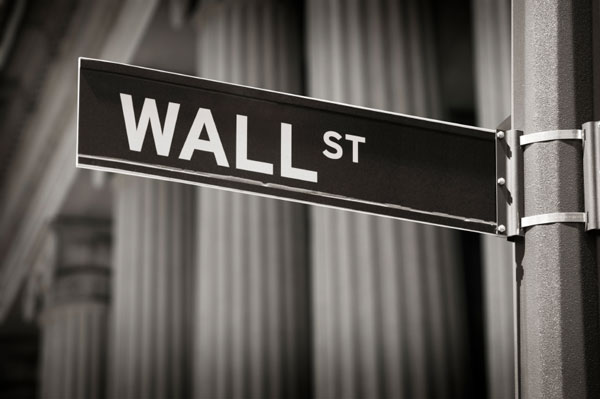Wall St. Still Hasn’t Learned
Lehman Brothers, Inc., released its second quarter earnings last week, reporting a loss of $2.8 billion ($4.1 billion before taxes). The losses were caused
Jul 31, 202047.9K Shares1.2M Views
Lehman Brothers, Inc., released itssecond quarter earningslast week, reporting a loss of $2.8 billion ($4.1 billion before taxes). The losses were caused by writedowns and failed hedges on the same kind of toxic mortgage and leveraged-loan securities that have been wreaking havoc on bank earnings throughout the world.
Lehman is one the storied names on Wall Street, with a history that stretches back more than 150 years. After a rocky period in the 1980s and 1990s, it became one of the moresure-footed banks under its CEO, Richard Fuld. It was one of the few major players in mortgage markets not to sustain heavy losses in 2007 -– and it underscored its superiority by ostentatiously raising its dividend at year end.
Lehman surprised the market again by announcing decent earnings for its first quarter. Many analysts had anticipated Bear Stearns-style problems. But then market confidence was rattled when the first quarter profits turned out to based on questionable, if perfectly legal, accounting tactics.
Illustration by: Matt Mahurin
The fact that Lehman is now finally coming clean is, therefore, encouraging. Even more so is the sharp reduction in its leverage — from about 32:1 down to 20:1. Leverage is measured by dividing equity into total assets, and Lehman improved on both ends of the formula. Writedowns and asset sales reduced the firm’s total assets, but it also managed to raise $6 billion in new equity capital.
But the scary part here is that Fuld has reassured the stock market that he has no intention of sitting on such conservative leverage. Much of the new capital would be devoted to re-leveraging, in order to generate the double-digit returns financial sector investors believe they are entitled to.
That suggests that Wall Street and its investors still don’t get it. The whole credit crunch has been about excessive leverage. Most American adults understand the realities of leverage from their experience with home mortgages, but few really appreciate the extremes to which Wall Street has pushed the game.
Start with the basics. You’re a trader, and you buy $1 million worth of mortgage-backed securities, at the modest leverage of 5:1 – you put up $200,000 of the firm’s money and borrow $800,000 from banks. If the mortgages rise in value by 10 percent, you make 50 percent return on your equity; but if they fall 10 percent, half your equity is gone, and the firm has to stump up another $80,000 to maintain the agreed leverage ratio (The position is now worth $900,000; subtracting the $800,000 bank loan leaves only $100,000 in equity. The $80,000 restores leverage to 900:180 = 5:1).
But there are lots more ways to rev up leverage. Consider “structured finance:” A bank or hedge fund buys up mortgage-backed securities or other assets, and pools them into CDO, or “collateralized debt obligation,” that is cut into five or six horizontal slices. The top slice, which may comprise 80 percent of the CDO bonds, gets first claim on all cash flows, so it has the lowest risk. The bottom layer, perhaps 5 percent of the bonds, is the “equity layer.” They get the highest returns — but also are on the hook for the first 5 percent of losses.
Since a 5 percent loss in the CDO wipes out the entire equity layer, those bonds come with “embedded” leverage of 20:1. Assume again that you’re a trader playing with 5:1 leverage, but this time you buy a CDO 5 percent equity layer. Multiply your 5:1 leverage times the security’s embedded 20:1 leverage, and your true leverage is 100:1. Just a 1 percent loss on the CDO wipes out all your equity in the deal.
Or suppose that the firm that creates the CDO can’t sell the equity layer bonds right away, so it holds them in its trading books. If , like Lehman, it’s leveraged 20:1, its true leverage will be 20:1 times the embedded leverage of 20:1 in the bonds. That’s 400:1, so just a quarter of 1 percent loss wipes out all its equity in the deal. That’s the math driving the never-ending stream of bank writeoffs. Since the third-quarter of last year, total bank losses have risen past $400 billion, with no end in sight.
Commercial banks — FDIC-insured “depositary banks” — have regulatory limits on their leverage, so they have been losing their traditional lending markets to price-cutting by highly-leveraged investment entities like investment banks and hedge funds. By 2007, three-quarters or more of lending emanated from these “non-banks.” A good chunk, however, also came from the disastrous off-balance-sheet entities, like SIVs (don’t ask) that the commercial banks created to evade the leverage rules.
The Federal Reserve has recently estimated that the so-called“shadow bank” assets, at some $10.5 trillion, are now higher than all regulated bank assets. At the same time, the “shadow” and regulated banking sectors are deeply intertwined. Remember how our trader kept borrowing to ratchet up her positions? A lot of those loans would have come from regulated banks acting as “prime brokers” for the shadow system. The regulated banks, that is, have been taking their turn at sucking the hookah pipe, and learning that second-hand smoke can kill you too.
The fact is that de-leveraging will happen whether or not Fuld or the other investment banking barons want it to. The credit bubble has pushed indebtedness so high that legions of borrowers -– home owners, commercial developers, private equity companies –- can’t pay back their loans. Like most of Wall Street, Lehman’s books are still stuffed with commercial and residential mortgages, leveraged loans and tens of billions in securities with no market prices, all asset classes in free-fall.
So why believe Lehman now? A couple of months ago, after all, Fuld was telling the world that Lehman didn’t need any more equity, only to find himself scrambling madly for new equity just before the quarter’s close to avoid joining Bear Stearns in the display rack of pickled corpses of former firms.
De-leveraging is a necessary prerequisite to a real recovery. The brunt of federal policy to date, however, has seemed directed at keeping the squirrel cage running at high speed -– trying to help consumers carry on borrowing and spending, taking questionable assets onto the Federal Reserve Bank’s balance sheet, instead of accelerating the burnout of accumulated excesses.
The current administration has long slipped into crippled-canard-dom. But this year’s election winners need to come into office with clear programs for cleaning up the mess while somehow cushioning the worst impacts on ordinary folks. Let’s hope that they are up to it.
Charles R. Morris, a lawyer and former banker, is the author of “The Trillion Dollar Meltdown: Easy Money, High Rollers and the Great Credit Crash.” His other books include “The Tycoons: How Andrew Carnegie, John D. Rockefeller, Jay Gould and J.P. Morgan Invented the American Supereconomy” and “Money, Greed, and Risk: Why Financial Crises and Crashes Happen.”

Paula M. Graham
Reviewer
Latest Articles
Popular Articles

